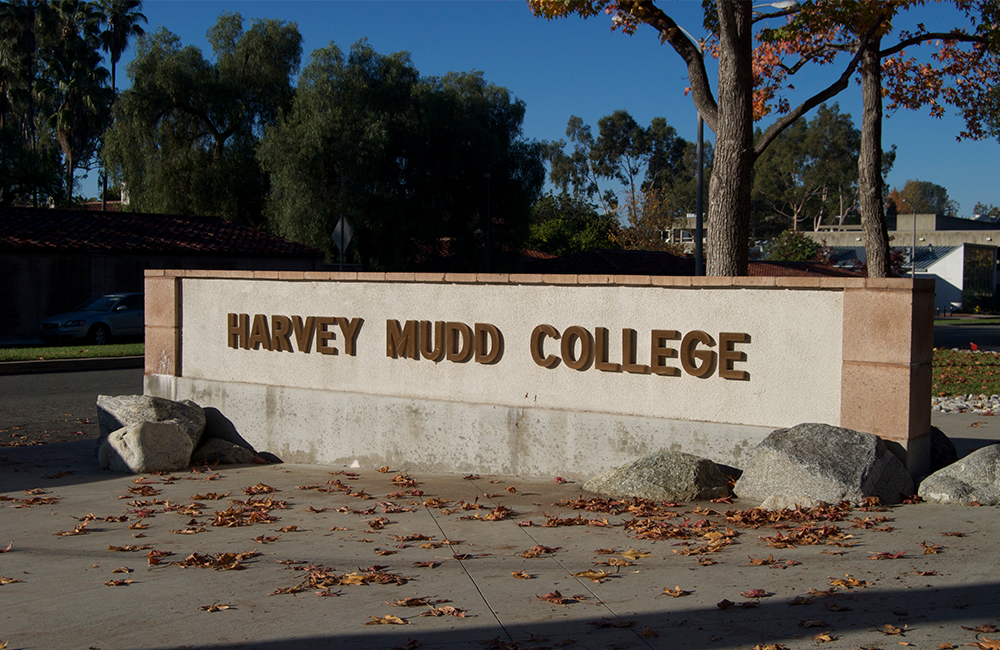Sandia Clinic Team Publishes Nanocomposite Research
September 22, 2020
Having overcome pandemic challenges, members of the 2019–2020 Harvey Mudd College Sandia National Laboratories Clinic team are celebrating publication of their research by Cambridge University Press.
The Sandia Clinic project, one of 56 Clinic projects sponsored last academic year, concerns barium titanate (BTO), a ferroelectric material used in capacitors because of its high dielectric constant, which may be even higher in nanoparticle form. A team of juniors and seniors were tasked with helping Sandia investigate the dielectric constant of BTO nanoparticles as a function of particle diameter by manufacturing composites of BTO embedded in low-density polyethylene.
At the outset of the Sandia Clinic project in 2019, the team set a goal to publish their research in a peer-reviewed scientific journal. Up until spring break, the goal was in reach: The team was preparing to make presentations at two conferences and, in early March, they’d made a major breakthrough in the lab, which seemed to promise success. Then the COVID-19 pandemic forced campus closure, and with that, the Sandia Clinic project, which depended on the use of an on-campus injection molding machine.
That’s when Daniel Brito ’20, Guadalupe Quirarte ’20 , Joshua Morgan ’20 , Eleanor Rackoff ’20, Michael Fernandez ’20 and Dithi Ganjam ’21 came up with a plan.
“The pandemic challenged our team in many ways by removing our ability to work in our lab and communicate with each other in person,” says Quirarte. “However, our team’s problem-solving skills helped us swiftly readjust our schedules.”
Before the campus closed in mid-March, the Sandia team had made great strides in its research analyzing the dielectric properties of barium titanate nanocomposites. “With recent modifications to our fabrication method of the nanocomposites, we were able to fabricate samples with significantly higher concentrations of the nanoparticle,” says Quirarte.
“Our breakthrough was so exciting,” says Rackoff. “I was telling everybody about it. We were trying to develop a process to produce nanocomposites composed of BTO in order to extract the nanoparticle’s dielectric constant. But, in order to extract the dielectric constant, we needed to make nanocomposites that were at least 30% volume loading (that is, 30% of the nanocomposite is BTO). Literally a day or two before the entire school left because of COVID, we achieved a 30% volume loaded sample. Our whole team was so excited.”
Quirarte says, “Developing a fabrication method that allows for such flexibility in the concentration levels is a necessary step towards more accurate examination of the nanocomposite’s dielectric properties.”
Through virtual collaboration, the team developed an efficient workflow and began building on their previous results. “We used computational methods to perform insightful comparisons between experimental and simulated results,” Quirarte says. “This transition also helped us step back and develop areas of further work that can provide momentum to future iterations of the project.”
“Everybody had a great attitude about chipping into work wherever needed,” says Rackoff. “We would all volunteer to take on different parts of the process, we would alternate on sending out emails/submitting purchase requests, doing research, etc. Our collaboration was definitely key to our success, because we all had a hand in the work.”
Team advisor and engineering professor Albert Dato says, “The Clinic Program provided the team with the ability to remotely access COMSOL software on the Clinic computers, which enabled them to work as a team and generate results. The team’s publication is a result of the data generated from the hands-on work before COVID-19 and the computational simulations that were done remotely after campus was shut down.”
Dato also notes that the Sandia team chose to continue to work on this project even after the seniors had graduated. “Sandia Clinic liaison Todd Monson is very impressed by the team and their hard work, resilience and dedication to their Clinic project,” he says.
“Being part of the Sandia Clinic team with other passionate teammates was a valuable final experience at Harvey Mudd,” says Quirarte. “Everyone brought a unique set of skills from different major backgrounds which really helped propel the research forward.”
The Clinic Program, a pioneering program of collaboration between industry and Harvey Mudd College that has been a hallmark of this institution for more than 50 years, engages juniors and seniors in the solution of real-world, technical problems for industrial clients. Clinic allows students to apply their academic experience in partnership with a corporate sponsor. More than 250 students and 48 corporate sponsors collaborated during the 2019–2020 Clinic Program.
